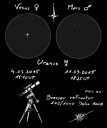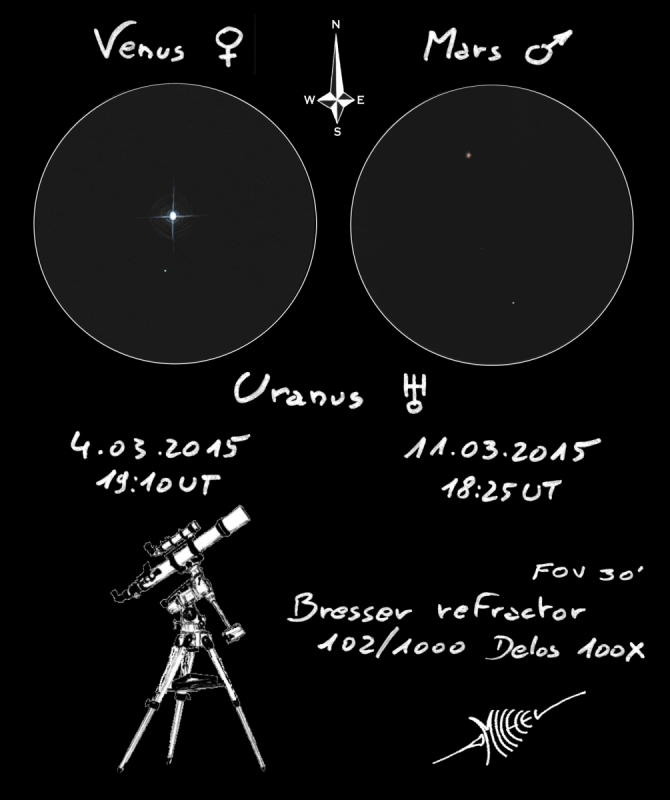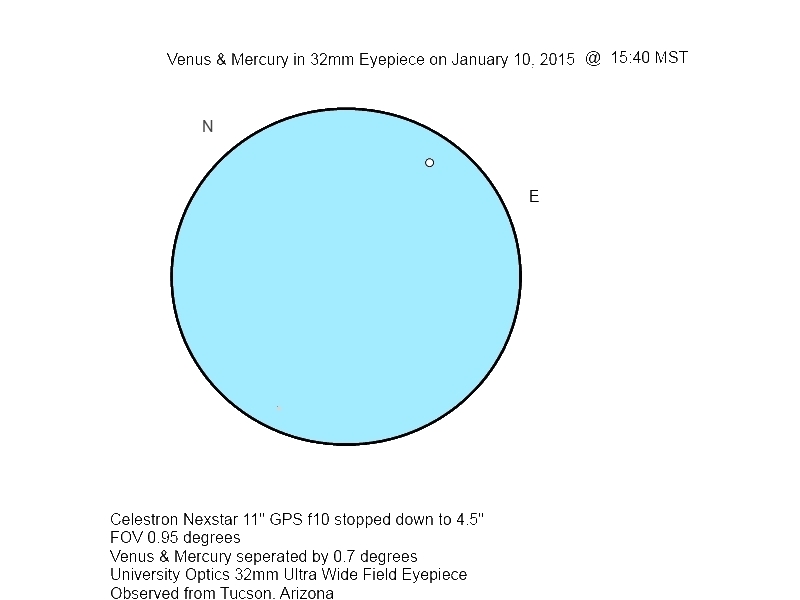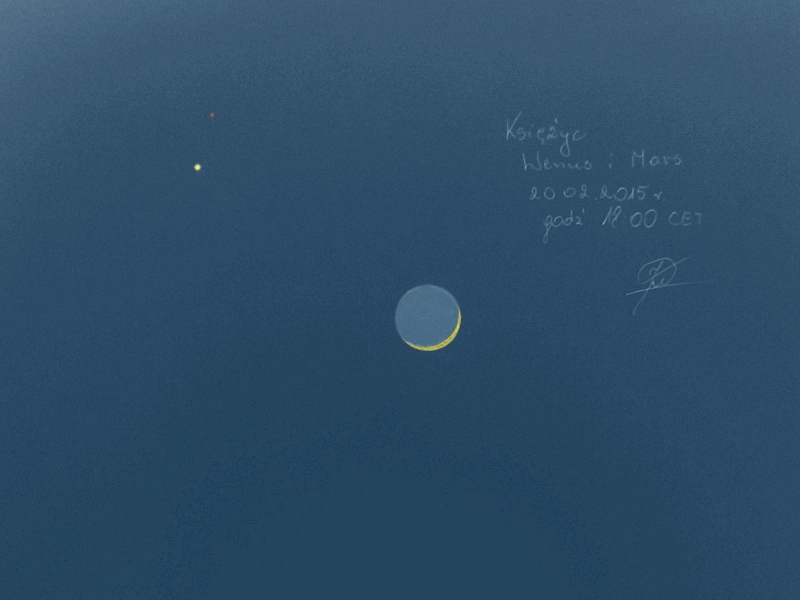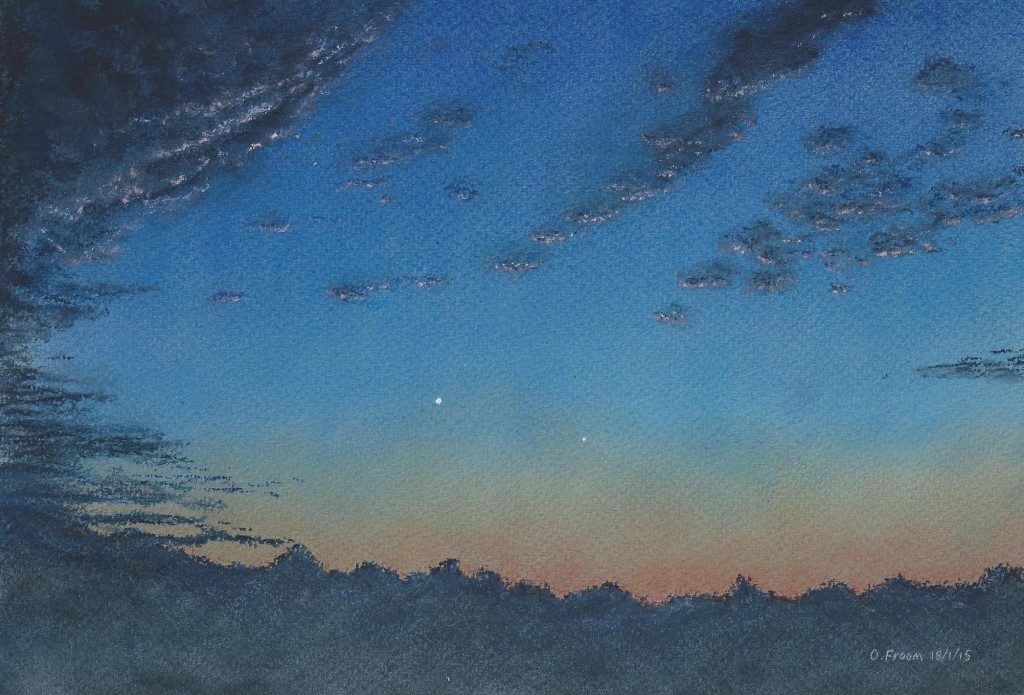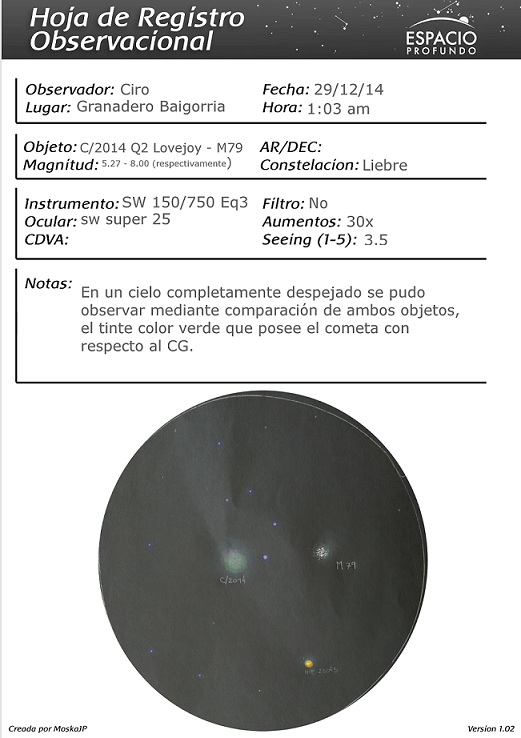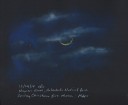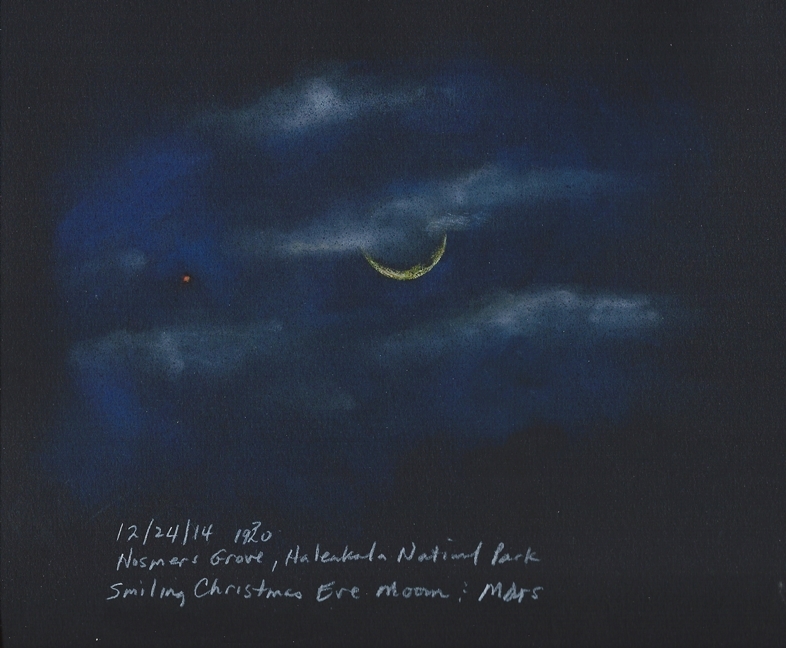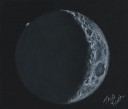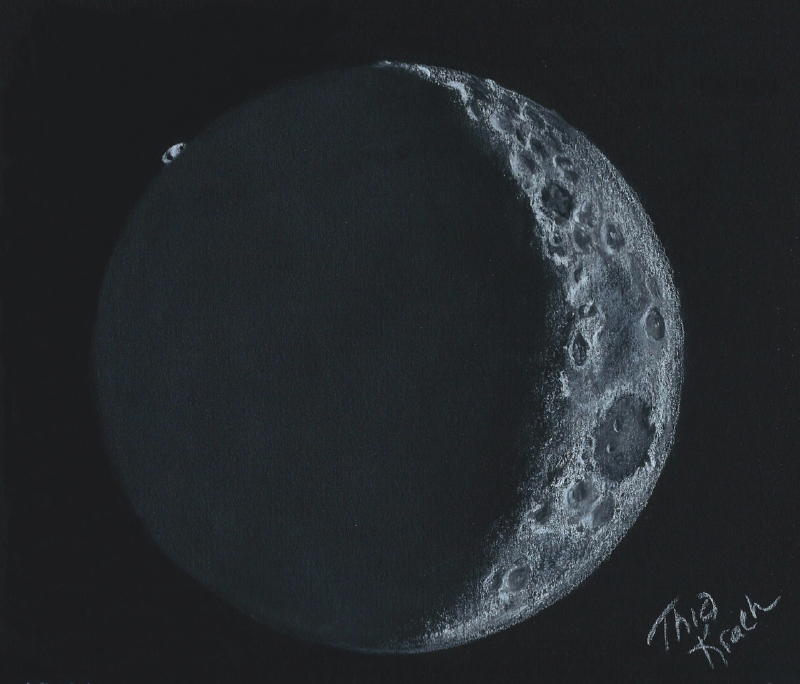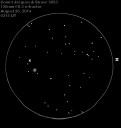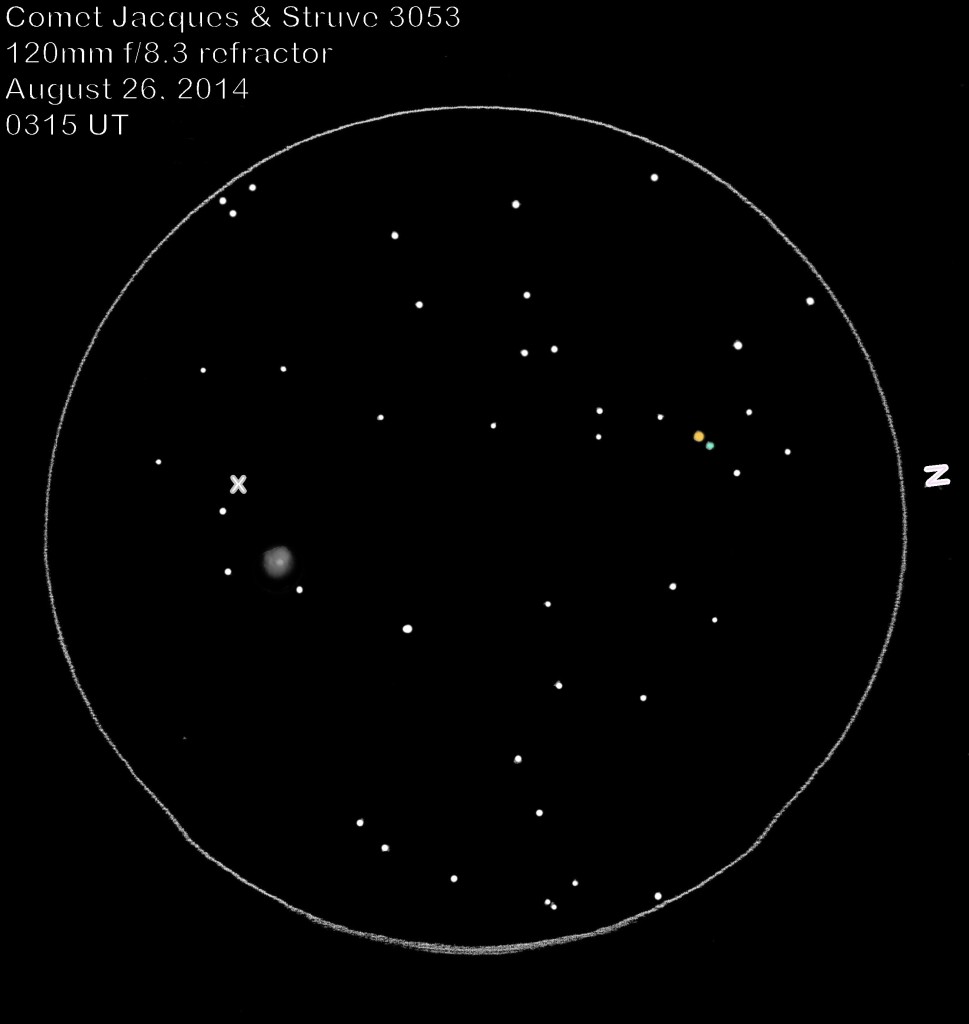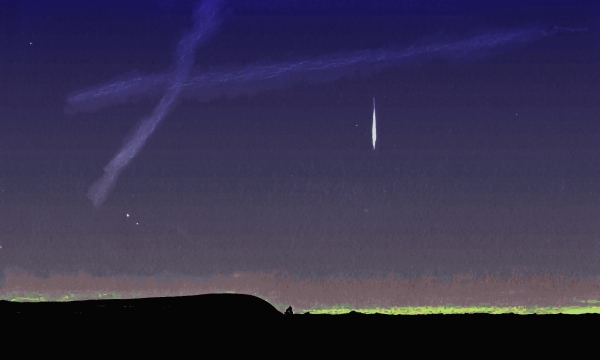
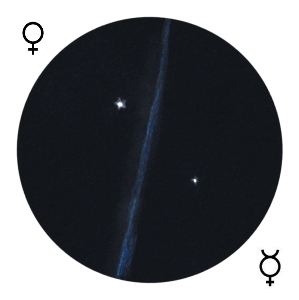
Object Name (Venus and Mercury)
Object Type (Plante conjunction and meteor)
Location (Artignosc-sur-Verdon France)
Date (Jan 10th 2015)
Media (watercolor, white paper, inverted after scan)
January the 10th the two inner planets of our solar system are very close. Following the nice pastel sketch made by Frank Jan 6th (ASOD Feb 2nd) I will take the opportunity to compare its view with this I made 4 days later.
While my watercolor session, a probable Quadrantide meteor produce a brilliant flash.
The two planets are easily seen in the field of my UWA EP.
Clear sky to you all !
Michel Deconinck

